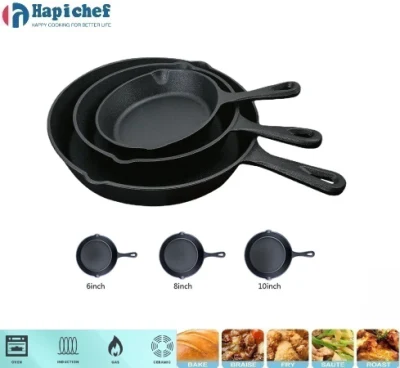Effective Methods for Cleaning Cast Iron Skillets from Leading Manufacturers and Brands
Cleaning Cast Iron Skillets A Guide for Manufacturers and Home Cooks
Cast iron skillets have long been a staple in kitchens around the world, cherished for their durability, versatility, and ability to retain heat. However, to keep these culinary workhorses in prime condition, proper cleaning and maintenance are essential. This article explores the best practices for cleaning cast iron skillets, catering to both manufacturers and home cooks.
Understanding Cast Iron Skillets
Cast iron skillets are made from iron alloys that have been cast into pans, creating a porous surface that retains heat effectively. This unique property makes them ideal for frying, baking, and sautéing. However, because of their porous nature, they require special care compared to other cooking utensils. When maintained correctly, cast iron skillets can last a lifetime and even improve with age.
The Importance of Cleaning
Cleaning cast iron skillets properly is crucial to preserving their seasoning—a layer of polymerized oil that not only protects the pan from rust but also enhances its non-stick properties. Incorrect cleaning methods can damage this seasoning, leading to a subpar cooking experience.
Best Practices for Cleaning Cast Iron Skillets
1. Cool Down Before Cleaning Allow the skillet to cool down to a safe temperature before cleaning. Sudden temperature changes can cause the skillet to crack.
2. Avoid Soap Contrary to what many believe, using soap on cast iron skillets is generally not recommended. Soap can strip away the seasoning, compromising the pan's surface. Instead, opt for hot water and a non-abrasive sponge or cloth to wipe it clean.
cleaning cast iron skillets manufacturers

3. Scrape Off Food Residue For stubborn food residue, use a plastic scraper or a chainmail scrubber designed specifically for cast iron. Avoid using steel wool or harsh scrubbers that can remove the seasoning.
4. Use Salt for Stuck-On Food Coarse salt can be an effective natural abrasive. Sprinkle a tablespoon of kosher salt onto the skillet and use a scrub pad or towel to scrub away food particles. This method is gentle on the seasoning while also effectively cleaning the pan.
5. Dry Immediately After cleaning, dry the skillet immediately with a paper towel or cloth to prevent rust. You can also place it on low heat for a few minutes to ensure all moisture evaporates.
6. Re-season if Necessary If the seasoning begins to wear off or if rust appears, it’s time to re-season the skillet. Apply a thin layer of vegetable oil or flaxseed oil to the skillet—inside and out—and bake it upside down in the oven at a high temperature for an hour. This process will restore the protective layer and enhance non-stick qualities.
Manufacturer Considerations
For manufacturers producing cast iron skillets, it's crucial to design them with maintainability in mind. Using high-quality materials that are less prone to scratching and ensuring a uniform surface can make a significant difference in consumer satisfaction. Additionally, providing clear care instructions with each skillet helps educate customers on the importance of proper cleaning and maintenance, fostering brand loyalty and extending the product's lifespan.
Conclusion
Caring for cast iron skillets is vital for both home cooks and manufacturers. With the right cleaning techniques, these versatile tools can provide years of exceptional cooking experiences. By steering clear of harsh soaps, avoiding abrasive materials, and understanding the significance of seasoning, anyone can enjoy the benefits of a well-managed cast iron skillet. Whether you’re cooking a hearty breakfast or preparing a perfect steak, a well-maintained cast iron skillet can be your best ally in the kitchen.
-
hapichefs-casserole-cast-iron-cookware-symphonyNewsAug.23,2025
-
casserole-cast-iron-cookware-in-a-modern-art-installationNewsAug.23,2025
-
hapichefs-molten-artistry-portable-cast-iron-bbq-grill-birthNewsAug.23,2025
-
forging-flavor-in-acast-iron-bbq-grills-fireNewsAug.23,2025
-
hapichefs-enameled-cast-iron-bakeware-a-chefs-museNewsAug.23,2025
-
why-colorful-enameled-cast-iron-bakeware-improves-meal-tasteNewsAug.23,2025
-
Unleash Your Culinary Creativity with Specialized Roasting and Baking PansNewsAug.20,2025
